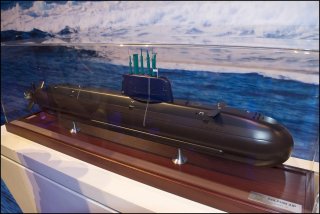Israel's Nuclear Weapons Arsenal is No Joke
Israel has never acknowledge the existence of its nuclear weapons program, but the power of these weapons is beyond any doubt.
Here's What You Need to Remember: Although never officially acknowledged, Israel has widely considered a nuclear power. Though the Popeye Turbo and Jericho 3 are the likely nuclear delivery vehicles, Israel’s non-nuclear missile umbrella is also quite impressive. Enemies beware.
Israel’s missile capabilities are perhaps among the most advanced in the Middle East. Through extensive aid from the United States and Europe, as well as collaboration in developing missiles, Israel has been able to nurture a mature domestic missile production capability that has been successful as exports.
Most of Israel’s missiles are relatively short- to medium-range, they also have several missiles in the Jericho family that can reach out into the 1,500 to 4,800-kilometer range (930 to 3000 miles).
Delilah
Although originally designed as a decoy to distract enemy air defenses, the Delilah today functions as a subsonic cruise missile and is compatible with a wide suite of Israeli aircraft.
Due to its stubby wings, it has the ability to loiter after launch until the appropriate detonation time and has a range of 250 to 300 kilometers. It was used in 2006 by the Israeli Air Force over Lebanon against a Hezbollah arms convoy. It is reportedly accurate to one meter.
Popeye Family
The first in the Popeye family of missiles are solid-fueled, air-to-ground launched high explosive variant with a ranger of approximately 80 kilometers or about 50 miles. They were put into Israeli service in the mid-1980s.
The Popeye system uses a man-in-the-loop system of TV navigation that requires an onboard Weapons Officer to guide the Popeye to its target and has a circular error probability of 3 meters (10 feet). Although highly accurate, the Popeye has to be accompanied by the guidance system, which is quite heavy — too heavy for Israel’s extensive F-16 fleet.
In 1994, the Popeye got extensive upgrades. Although the warhead size was decreased, so were the internal electronics weight, and the missile’s aerodynamics were improved. Its range is slightly less — 75 kilometers — but the Popeye 2 can be launched from Israeli F-16s.
The latest variant of the Popeye family is the Popeye Turbo, which is a glide missile powered by a turbofan and experts speculate it has a much greater range, around 200 to 350 kilometers (125 to 220 miles). A variant of the Popeye Turbo may be able to be launched from Israel’s submarines and is the likely delivery vehicle for Israel’s nuclear warheads.
Jericho 3
The Jericho 3 is Israel’s longest-range missile and entered service with Israel Defense Forces in 2011. Using solid propellant, it can travel from 4,800 to 6,500 kilometers, or 3,000 to 4,000 miles, which puts the entire Middle East, most of Africa, all of Europe, India, Moscow, and western China in its crosshairs.
Although it can, in theory, carry a large payload of 1,000 to 1,300 kilos, its nuclear payload is estimated to be roughly half that. Jericho 3s are allegedly stationed in caves underground near Tel Aviv.
Nuclear-Capable
Although never officially acknowledged, Israel has widely considered a nuclear power. Though the Popeye Turbo and Jericho 3 are the likely nuclear delivery vehicles, Israel’s non-nuclear missile umbrella is also quite impressive. Enemies beware.
Caleb Larson is a defense writer for the National Interest. He holds a Master of Public Policy and covers U.S. and Russian security, European defense issues, and German politics and culture.
This article was published last year and is being reposted due to reader interest
Image: Reuters

